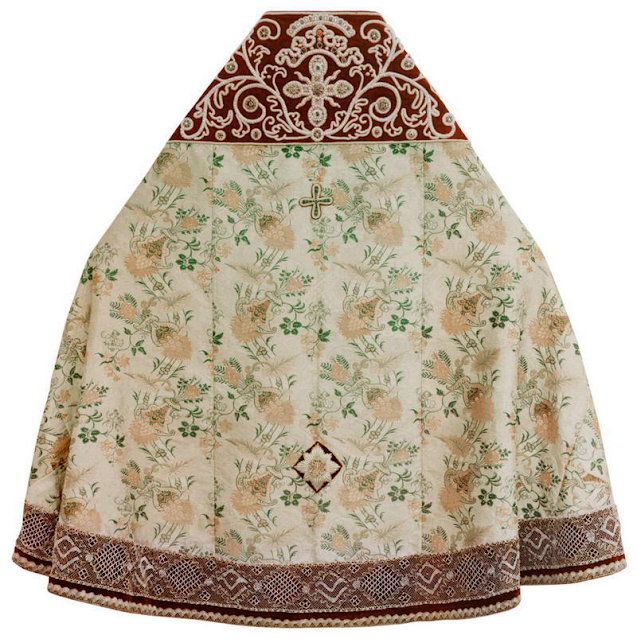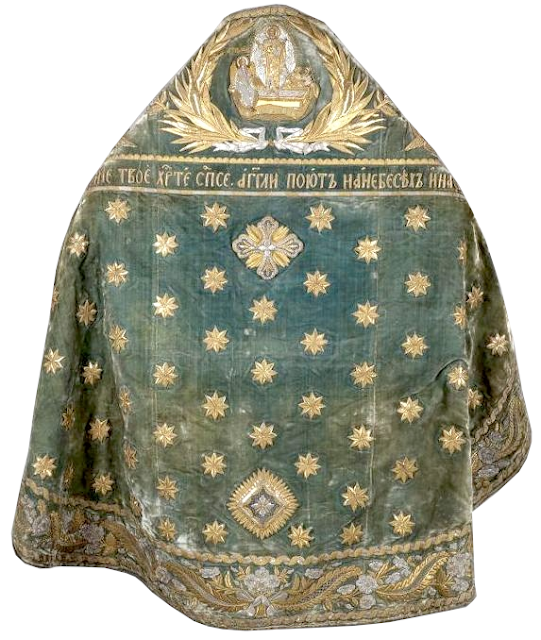Awhile back we shared some general examples of antique vestments in the Eastern tradition. There we had noted that, unlike their Latin rite counterparts, it seemed that examples of antique vestments in the Christian East were far more difficult to come by. I suspect this is in great part circumstantial -- with the language barrier being a great part of the issue. With a little persistence, you can indeed find them and they are worth seeing, particularly since, not unlike the situation of the Latin West, many modern vestments of the Eastern tradition often look rather 'cookie cutter,' whereas these antique vestments show a great deal more variety and distinctiveness in the textiles and ornamentation used.
These phelonia, which are the equivalent of the Latin chasuble, all come from within the Russian tradition (for just as in the Latin rite we can identify different regional shapes/influences of vestments, so too can we say the same in the Christian East). The Russian phelonion is indicated primarily by its stiffened, high backed (or high necked if you prefer) cut that partially covers the back of the head (much like a Roman style cope does). By comparison, the Byzantine / Greek phelonion is tailored to be form-fitting at the shoulders. Russian phelonia can also have longer length in the front than their Byzantine counterparts, but that is a focus for another day.
These examples mainly date from the eighteenth and nineteenth centuries (possibly some are late seventeenth) and in terms of the textiles used within these examples, you will see a lot of similarities with what is also used in the Latin West during this same period. We can find rich velvets and floral silk lampas; we also, not surprisingly, see a number of examples that utilize Ottoman and Middle Eastern textiles.
in terms of their ornamentation, some utilize galloons, others not. Some include figurative embroideries, others do not. Most have a Greek cross located up around the shoulders, symbolizing the yoke of Christ that the priest carries. One might also note an eight-pointed star found toward the bottom of some of these examples. This is assigned various meanings but the most commonly assigned symbolism seems to be with reference to the Star of Bethlehem and the coming of the New Jerusalem.
So then, with all that in mind, here are some historical examples of phelonia within the Russian tradition.
Here, finally, are just a couple of details showing some of the embroidery work found on some of these phelonion.
-------
Do you like Liturgical Arts Journal's original content? You can help support LAJ in its mission and vision to promote beauty in Catholic worship either by:
You choose the amount! Your support makes all the difference.



















































